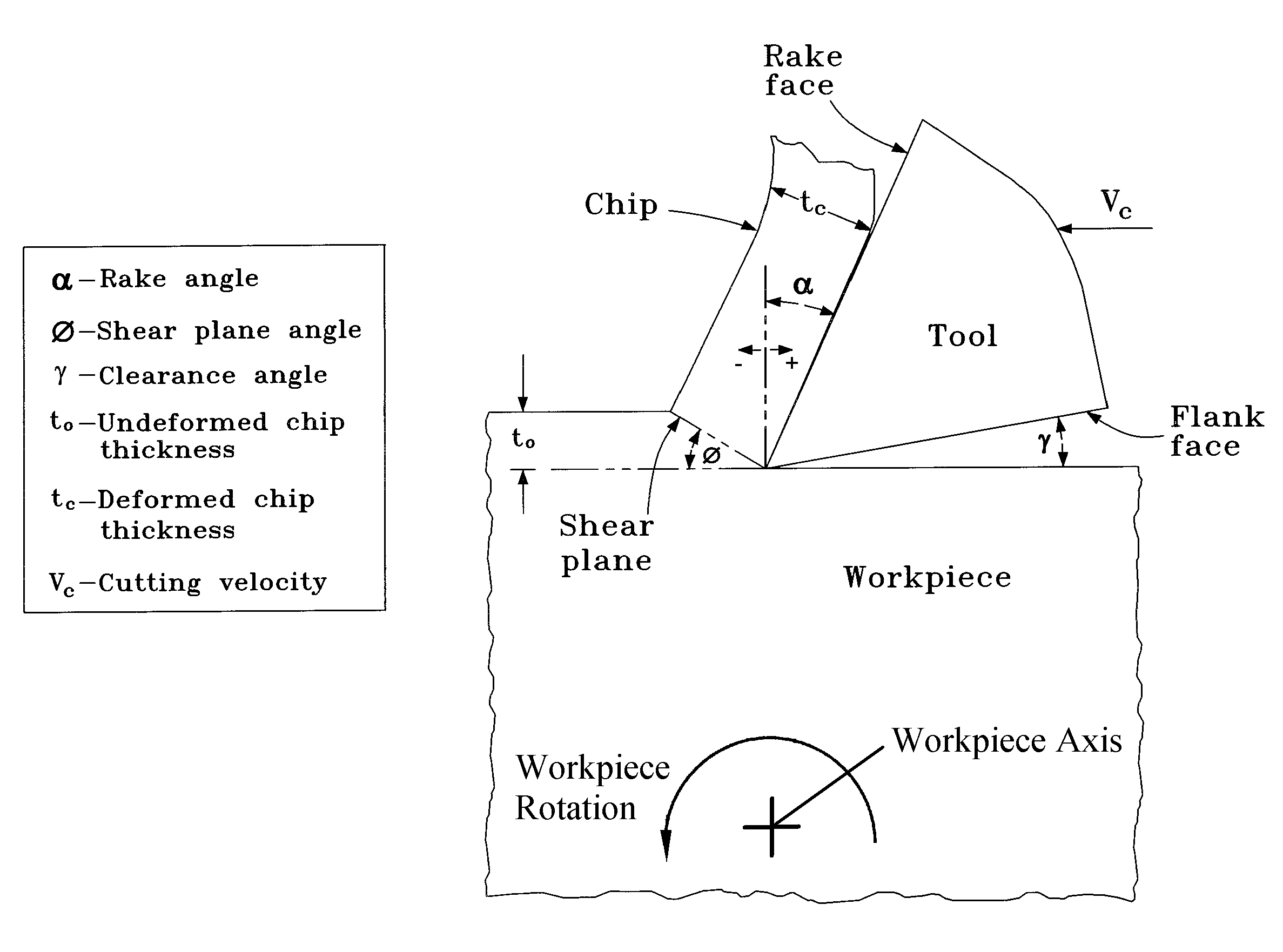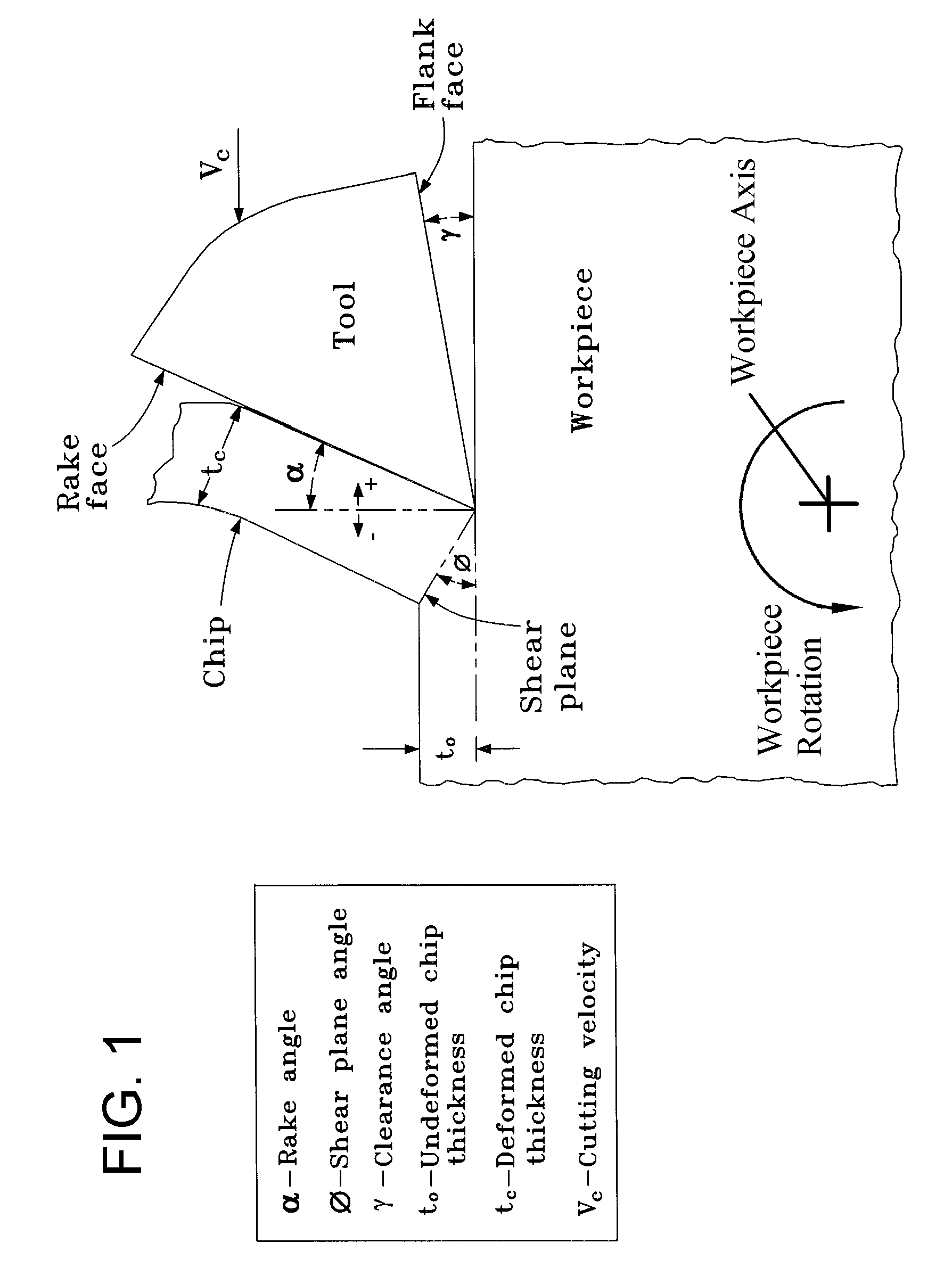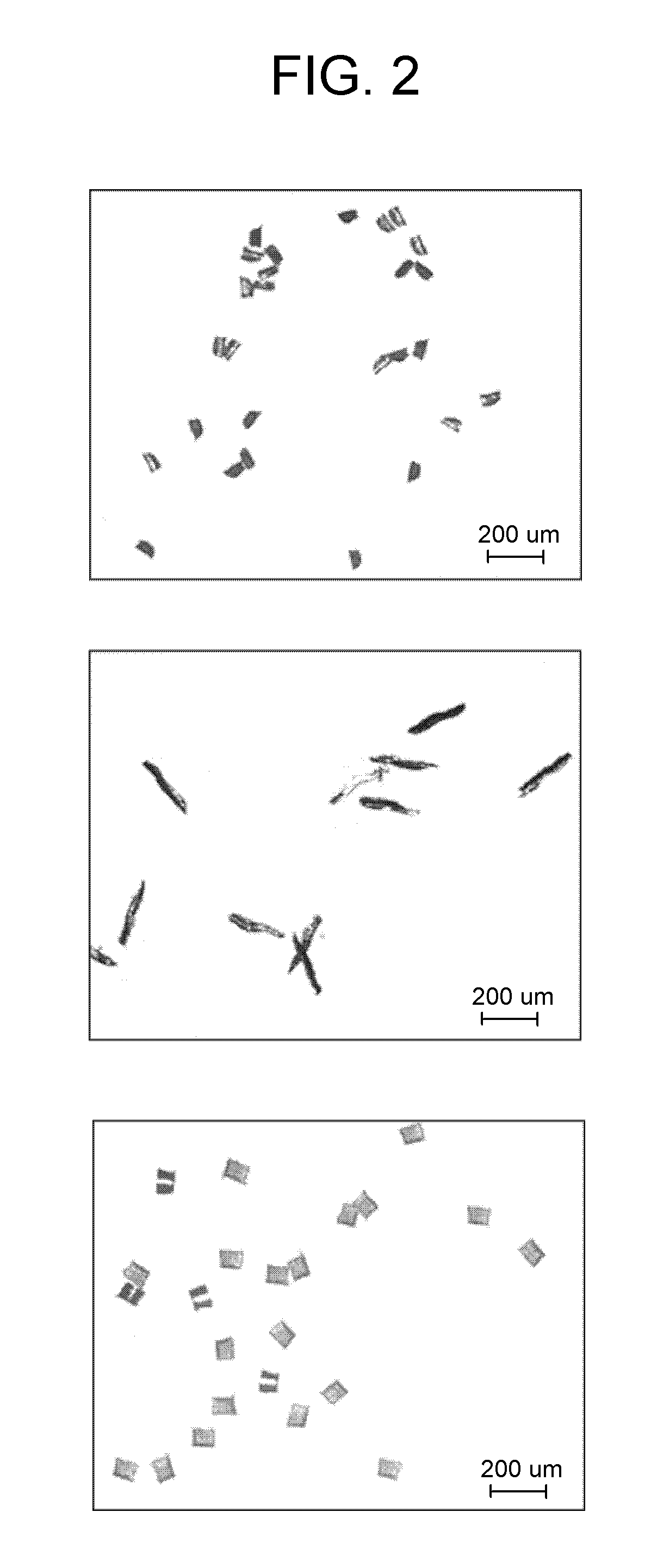Machining method to controllably produce chips with determinable shapes and sizes
a technology of machining body and chip, which is applied in the direction of magnetic bodies, program control, instruments, etc., can solve the problems of inability to induce large strains in very strong materials, such as tool steels, and considerable uncertainty of deformation field, so as to achieve accurate and repeatable results, large strain deformation, and high strain rate
- Summary
- Abstract
- Description
- Claims
- Application Information
AI Technical Summary
Benefits of technology
Problems solved by technology
Method used
Image
Examples
Embodiment Construction
[0016]The invention provides a method for the direct production of chips by modulated machining. Chips are directly manufactured from bulk materials, including metals, metal alloys, intermetallics, and ceramics. Furthermore, machining conditions can be chosen to induce severe plastic deformation that results the creation of chips with nanocrystalline microstructures from bulk materials that may have microstructures that are essentially free of nanocrystals. Modulation conditions are superimposed on the machining operation to control the size and shape of the chips, providing the capability of chips ranging from a few nanometers to several millimeters in length. Because chips of controllable morphology, size, and shape can be produced directly by the modulated machining process of this invention, the need for additional secondary comminution steps is eliminated. With controlled modulation, it is possible to produce chips with sizes and shape that include equiaxed particulates, ribbon...
PUM
| Property | Measurement | Unit |
|---|---|---|
| length | aaaaa | aaaaa |
| length | aaaaa | aaaaa |
| length | aaaaa | aaaaa |
Abstract
Description
Claims
Application Information
 Login to View More
Login to View More - R&D
- Intellectual Property
- Life Sciences
- Materials
- Tech Scout
- Unparalleled Data Quality
- Higher Quality Content
- 60% Fewer Hallucinations
Browse by: Latest US Patents, China's latest patents, Technical Efficacy Thesaurus, Application Domain, Technology Topic, Popular Technical Reports.
© 2025 PatSnap. All rights reserved.Legal|Privacy policy|Modern Slavery Act Transparency Statement|Sitemap|About US| Contact US: help@patsnap.com



